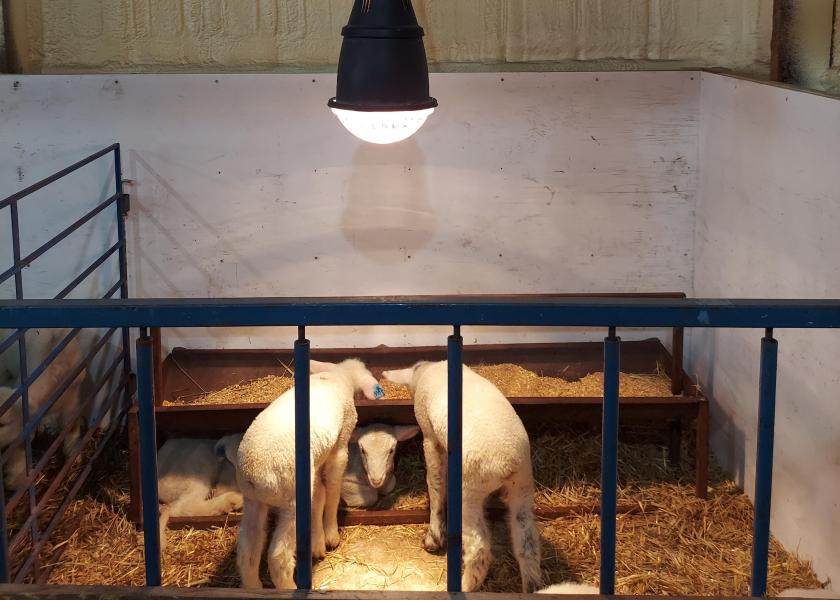Use Caution With Heat Lamps and Newborn Livestock

As spring approaches, many ranchers are preparing a clean, dry and warm place for newborn animals. Frigid temperatures in the Upper Midwest make it a challenge for producers to keep our newborn livestock warm and protected from the harsh, winter elements.
One option for keeping newborn livestock warm is to provide supplemental heat by installing heat lamps. However, severe risks can accompany the use of heat lamps inside a barn.
“As livestock producers, we want to do everything in our power to establish the best outcome for our newborn stock,” says Travis Hoffman, North Dakota State University and University of Minnesota Extension sheep specialist. “Sometimes we need to help our newborn livestock by providing supplemental heat to prevent hypothermia.”
The lower critical temperature for newborn lambs and kids is 50 degrees Fahrenheit. Providing additional heat in the form of heat lamps for newborn lambs, kids and calves inside a “hot box” can aid in newborn survivability.
Unfortunately, the use of heat lamps also adds increased fire risk to barns, especially when heat lamps are placed over deep, bedded straw.
“The risk of barn fires increases anytime you add a heating system to your barn, especially the use of heat lamps,” says Angie Johnson, NDSU Extension farm and ranch safety coordinator. “Ranchers must use extreme caution and preventative measures when using heat sources for your barn, especially heat lamps.”
If ranchers decide that using heat lamps is their best option to provide a supplemental heat source for newborn livestock, Johnson and Hoffman provide the following tips to help reduce the risk of fire:
- Secure all heat lamps with a non-flammable hanger. The best option is to use a chain and a locking chain connector to prevent the heat lamp from falling into the straw. Do not use twine or rope. Heat lamps should be secured as if they are permanent.
- Purchase high quality, heavy-duty heat lamps and thick glass bulbs. Utilize a heat lamp that is designed to withstand a fall and lay in a pen without starting a fire. Utilize heat lamp bulbs that won’t break if they fall into the pen. Farm and ranch stores that specialize in lambing and kidding equipment have heat lamp and bulb options.
- Clean off dust, cobwebs and dead insects before using the heat lamp.
- Inspect heat lamps for exposed wiring, loose bulb sockets or broken bulbs stuck in the heat lamp socket before using.
- Directly plug your heat lamp into an outlet, not an extension cord. Outlet receptacles should be both ground fault (GFCI) and arc fault (AFCI). An arc fault is an unintended arc created by a current flowing through an unplanned path that could create a fire, such as a heat lamp sparking when knocked into the pen. Ground fault trips when there is a sudden change in the amount of current going out versus coming back. Together, these two help prevent fire from a spark or electrocution if an animal chews on the wire. Additionally, ensure that you do not overload the circuit.
- Place a fire extinguisher near each entrance of the barn. Have a 10-pound, ABC-rated (multipurpose) fire extinguisher ready to use in case of a fire. Check extinguishers periodically to ensure that they have maintained their charge by reading the indicator dial.
- Consider investing in a barn temperature monitoring system or fire monitoring system.
“Using heat lamps in your barn means that ranchers must be diligent in checking the heat lamps every day, multiple times a day,” says Johnson. “If one animal bumps the heat lamp or chews on the electrical cord, causing exposed wires, a barn fire could easily occur in a matter of minutes. However, with proper safety considerations, heat lamps can be a viable option for protecting newborn livestock.”







